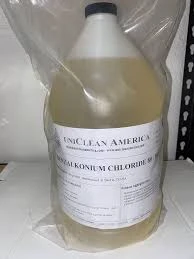Applications of Poly Aluminium Chloride in Water Treatment Processes and Benefits
Poly Aluminium Chloride A Key Player in Water Treatment
Water treatment is a critical process in ensuring the availability of clean and safe water for various uses, including drinking, irrigation, and industrial applications. One of the most effective substances utilized in this domain is Poly Aluminium Chloride (PAC). This chemical compound, a high-performance coagulant, has gained prominence in the water treatment industry due to its efficiency and multifaceted benefits.
What is Poly Aluminium Chloride?
Poly Aluminium Chloride is an inorganic polymer that is characterized by its high charge density, which plays a pivotal role in coagulation processes. It is produced by the hydrolysis of aluminum chloride and is sold in various forms such as powder and liquid. PAC typically has a range of aluminum content, with common formulations displaying 10% to 20% aluminum oxide. This versatility makes it suitable for various types of water treatment applications.
How Does PAC Work?
The mechanism by which PAC operates involves coagulation and flocculation, processes vital for removing suspended solids and impurities from water. When PAC is added to water, it dissociates, releasing aluminum ions that neutralize the negative charges of colloidal particles, which are often responsible for cloudiness and turbidity in water. This neutralization leads to the aggregation of these particles, forming larger clusters or flocs that can then be easily removed through sedimentation or filtration.
Applications of PAC in Water Treatment
1. Drinking Water Treatment PAC is highly effective in the treatment of drinking water. Its ability to produce clear water after turbidity reduction leads to higher quality potable water. Moreover, it reduces the concentration of harmful microorganisms and heavy metals, making it a vital component in ensuring the safety of drinking water supplies.
2. Wastewater Treatment In municipal and industrial wastewater treatment facilities, PAC is used to remove suspended solids, organic matter, and other contaminants. Its application significantly enhances the performance of treatment plants by improving sedimentation rates and reducing the overall chemical oxygen demand (COD) of the effluent, thus facilitating compliance with environmental regulations.
poly aluminium chloride uses in water treatment

3. Industrial Applications Many industries, including textile, paper, and food processing, utilize PAC for process water treatment and wastewater management. Its efficiency at low doses makes it an economical choice, helping industries minimize their environmental footprint and enhance their operational efficiency.
4. Removal of Color and Taste PAC is also effective in removing color and organic impurities, contributing to improved aesthetic qualities of water. This is particularly crucial for treatment plants that supply water not just for drinking but also for recreational or aesthetic uses.
5. Use in Dredging In marine environments, PAC is employed to control sediment resuspension, aiding in dredging operations by settling fine sediments and stabilizing the water column.
Benefits of Using PAC in Water Treatment
The advantages of using Poly Aluminium Chloride in water treatment processes are manifold. Firstly, PAC is more effective than traditional coagulants such as alum, requiring lower doses to achieve similar or superior results. This translates into cost savings for facilities due to reduced chemical consumption. Additionally, PAC works efficiently across a wide pH range, making it adaptable to varying water chemistry conditions.
Moreover, the use of PAC generates less sludge compared to conventional alum, facilitating easier handling and disposal of residuals. This promotes environmental sustainability, a crucial factor in modern water treatment practices.
Conclusion
Poly Aluminium Chloride has established itself as an essential component in the field of water treatment. Its efficacy in removing contaminants, enhancing water quality, and operational efficiency makes it a preferred choice for many treatment facilities worldwide. As water scarcity and pollution continue to pose challenges globally, the use of effective coagulating agents like PAC will play a critical role in securing access to clean water and safeguarding public health. The future of water treatment is undoubtedly linked to innovative solutions, and PAC stands at the forefront of this endeavor.
-
Water Treatment with Flocculant Water TreatmentNewsJun.12,2025
-
Polymaleic AnhydrideNewsJun.12,2025
-
Polyaspartic AcidNewsJun.12,2025
-
Enhance Industrial Processes with IsothiazolinonesNewsJun.12,2025
-
Enhance Industrial Processes with PBTCA SolutionsNewsJun.12,2025
-
Dodecyldimethylbenzylammonium Chloride SolutionsNewsJun.12,2025





